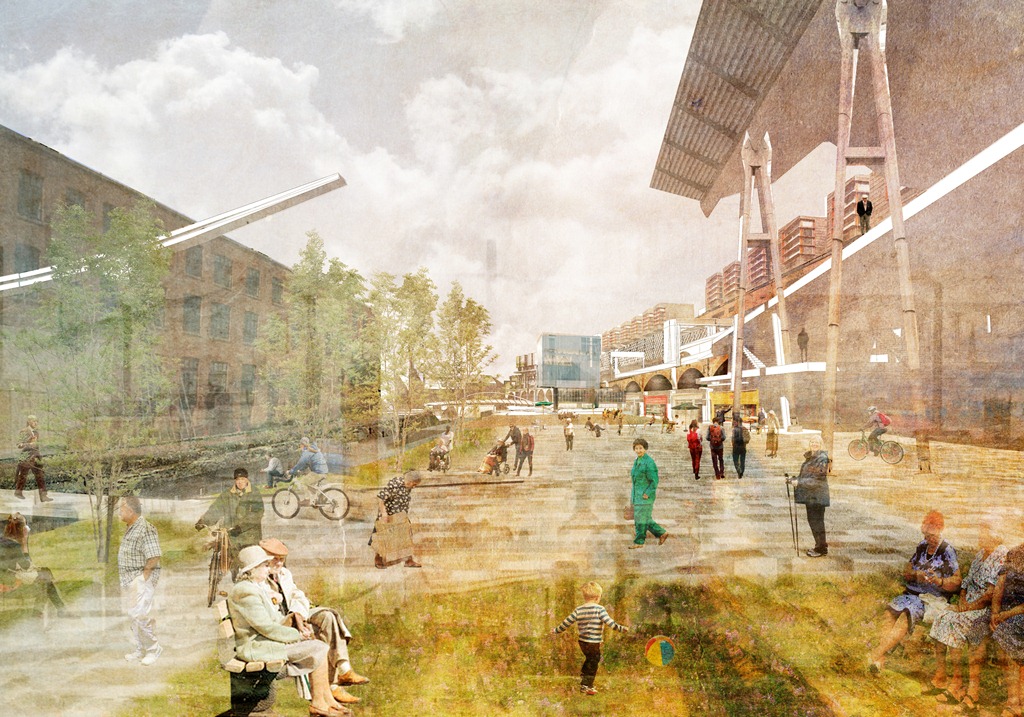Mood affects people’s judgments and actions. Well-designed places with good ambience are more likely to engage us and restore our ability to stay alert and be active. In this topic (Topic 2), researchers have been looking at the emotional dimensions of place using mobile neuroimaging methods, observational data and qualitative data from follow-up and walking interviews. The aim was to test a methodology for understanding negative and positive emotive ‘hot spots’ in the environment that affect older people’s mobility.

Environment and affect (Topic 2) builds on a 2013 pilot study by MMP team members Peter Aspinall, Panos Mavros, Richard Coyne and Jenny Roe. Published in the British Journal of Sports Medicine, this pilot involved 12 participants, all students at the University of Edinburgh (mean age of 30). Each participant in the pilot study walked for 25 minutes in three urban areas – ranging from a busy commercial street, to a path through a large, open greenspace – wearing an Electroencephalography (EEG) headset. The EEG recordings showed systematic differences between participants‘ responses to the three urban areas in line with restoration theory (emotional recovery from stress through exposure to green space and ‘soft fascination’).
VIDEO > Engaging the Brain
A short documentary by Panos Mavros about the 2013 pilot study.
Hosted by vimeo. Duration: 03 mins 52 secs
MMP took the research a step further, exploring the use of EEG on a wider scale (over 100 volunteers), and with a particular demographic (older people). Following testing of technology, methodology and six suitable walking routes, we ran a pilot EEG study over two months in summer 2014. The research involved both lab-based and outdoor testing with 20 older volunteers (aged 65-90) in Leith, Edinburgh. Each walk lasted around 15 minutes and was undertaken at the pace of the participant.
Our full EEG study ran from May to September 2015, with participants walking one of six routes pairing urban busy (a commercial street with traffic), urban quiet (a residential street) and urban green (a public park) spaces in a counterbalanced design. In total, 95 older people participated, of whom eight also took part in qualitative interviews about their experience. In tandem, we also conducted 19 walking interviews. The findings were presented at the Mobility, Mood and Place conference in Edinburgh in October 2016 and in a number of subsequent papers and conference presentations, winning the ‘Best Presentation’ award at the 19th International Conference on Cognitive Neuroscience (ICCN 2017) in Paris, France.
Our research suggests that green spaces seem to be restorative, offering a respite from the tiring demands that busy urban places make on our directed attention. Older people walking between different types of urban environments show changes in their emotional response to place based on brain activity patterns. Even a short walk can lift the mood if the environment is sufficiently varied. Things like colour and wildlife, opportunities for social contact, and familiar places, especially those linked to key memories, are highly valued.
Team: Richard Coyne, Jenny Roe, Peter Aspinall, Catharine Ward Thompson, Ian Deary, Neil Thin, Sara Tilley, Chris Neale, Steve Cinderby, Panos Mavros and Katherine Brookfield, with assistance from Agnes Patuano and Esther Rind.
Papers
Neale, C., Aspinall, P., Roe, J., Tilley, S., Mavros, P., Coyne, R., Thin, N., Bennett, G. and Ward Thompson, C. 2017. ‘The Aging Urban Brain: Analyzing Outdoor Physical Activity Using the Emotiv Affectiv Suite in Older People.’, Journal of Urban Health doi:10.1007/s11524-017-0191-9
Tilley, S., Neale, C., Patuano, A. and Cinderby, S. 2017. ‘Older people’s experiences of mobility and mood in an urban environment: a mixed methods approach using electroencephalography (EEG) and interviews’, International Journal of Environmental Research and Public Health 14(2), 151 doi: 10.3390/ijerph14020151
Aspinall, P., Mavros, P., Coyne, R. and Roe, J. 2013. ‘The urban brain: analysing outdoor physical activity with mobile EEG’, British Journal of Sports Medicine doi: 10.1136/bjsports-2012-091877
Roe, J., Aspinall, P., Mavros, P. and Coyne, R. 2013. ‘Engaging the brain: the impact of natural versus urban scenes using novel EEG methods in an experimental setting’, Environmental Sciences 1(2): 93-104
Media coverage
Parks make us smarter – science proves it!
Article on Salon.com by US journalist, Henry Grabar, featuring Topic 2 and an interview with MMP team member, Richard Coyne. Published 21st September 2013.
Easing brain fatigue with a walk in the park
New York Times blog post by US journalist, Gretchen Reynolds, on our 2013 pilot study for MMP Topic 2. Published 27th March 2013.

